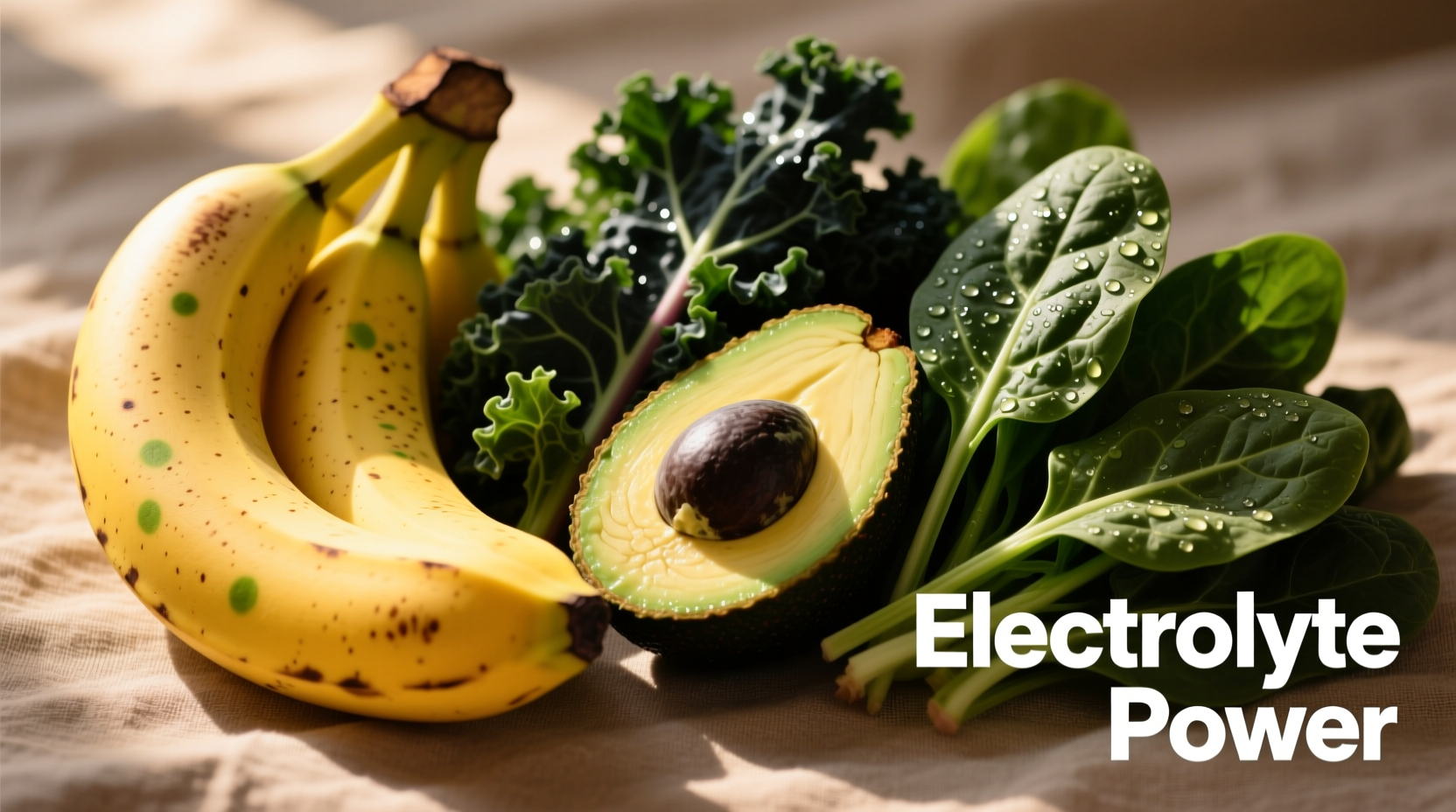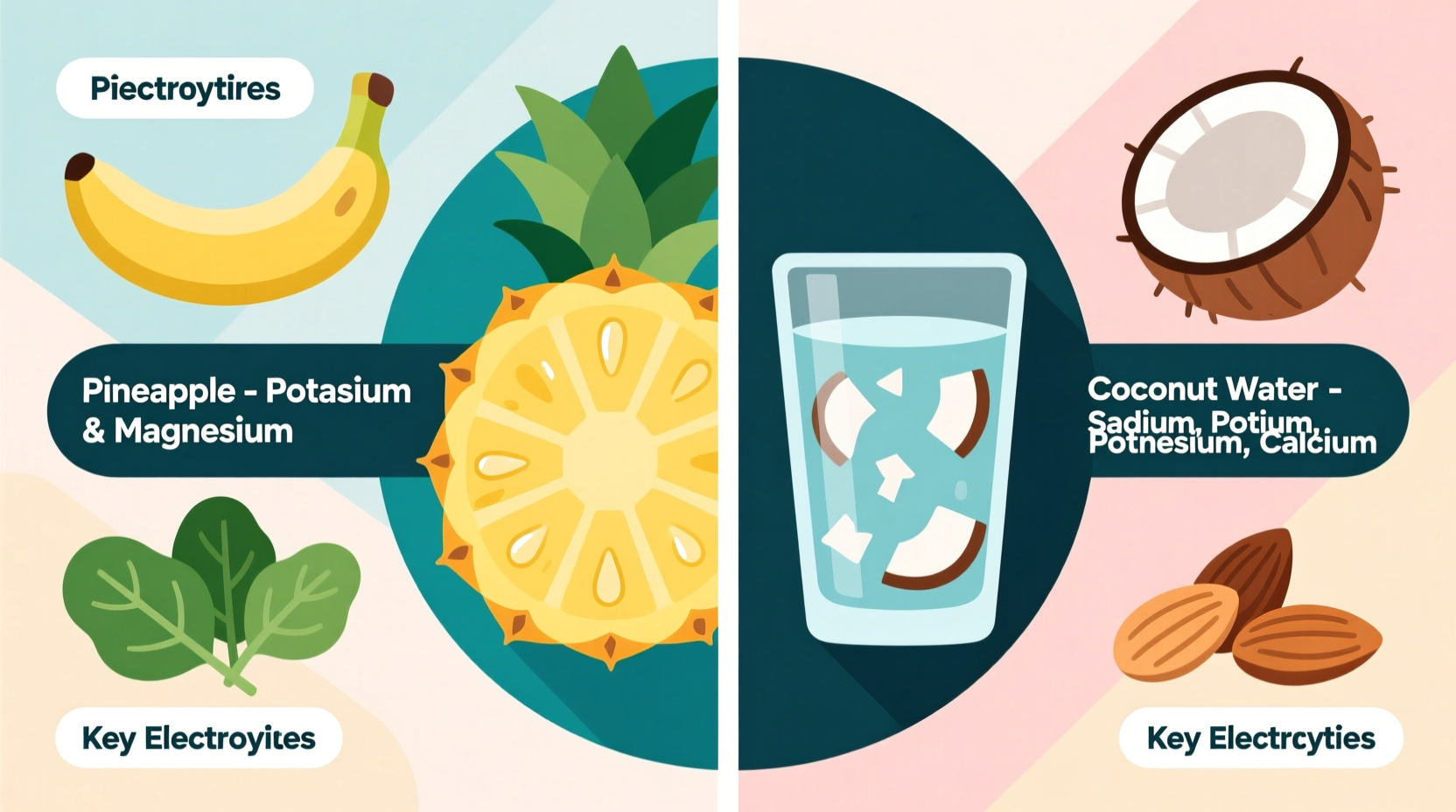The top natural food sources of electrolytes include bananas (rich in potassium), coconut water (contains potassium and sodium), dairy products like yogurt (excellent calcium source), leafy greens such as spinach (high in magnesium and calcium), avocados (potassium powerhouse), nuts and seeds (magnesium-rich), and celery (natural sodium source). Incorporating these electrolyte-rich foods into your daily meals helps maintain proper hydration, nerve function, and muscle performance without relying on processed sports drinks.
Why Your Body Needs Electrolytes From Food
Electrolytes are minerals that carry an electric charge and play critical roles in your body's basic functions. When you search for what food has electrolytes, you're likely seeking natural alternatives to commercial sports drinks or addressing concerns about hydration, muscle cramps, or recovery after illness. Unlike processed electrolyte solutions, whole foods provide these essential minerals alongside fiber, vitamins, and other nutrients that enhance absorption and overall health.
According to the National Institutes of Health, adults need approximately 2,600-3,400 mg of potassium, 1,000-1,300 mg of calcium, 310-420 mg of magnesium, and 1,500 mg of sodium daily. While exact requirements vary based on age, gender, and activity level, getting these electrolytes from food sources ensures you receive them in balanced proportions that your body can effectively utilize.
Natural Electrolyte Sources by Mineral Type
Potassium Powerhouses
Potassium regulates fluid balance, muscle contractions, and nerve signals. Low potassium can cause fatigue, muscle weakness, and irregular heartbeat. The best food sources include:
- Bananas (422mg per medium fruit)
- Avocados (708mg per whole avocado)
- Sweet potatoes (542mg per medium potato)
- Spinach (839mg per cooked cup)
- White beans (1,189mg per cup)
Calcium-Rich Options Beyond Dairy
While dairy products are well-known calcium sources, many people seek non-dairy foods that have electrolytes for various dietary needs. Excellent alternatives include:
- Collard greens (268mg per cooked cup)
- Almonds (76mg per ounce)
- Canned sardines with bones (325mg per 3 ounces)
- Tofu made with calcium sulfate (350mg per 4 ounces)
- Oranges (65mg per medium fruit)
| Electrolyte | Top Food Sources | Amount Per Serving | Best For |
|---|---|---|---|
| Potassium | Bananas, avocados, spinach | 400-800mg per serving | Post-workout recovery, hydration balance |
| Sodium | Celery, beets, olives | 30-100mg per serving | Natural replacement after sweating |
| Magnesium | Pumpkin seeds, almonds, dark chocolate | 50-150mg per serving | Muscle function, stress management |
| Calcium | Yogurt, kale, sardines | 200-350mg per serving | Bone health, nerve transmission |
Practical Ways to Incorporate Electrolyte-Rich Foods
Knowing what food has electrolytes is only half the solution—you need practical strategies to include them in your daily routine. Here's how to make electrolyte-rich eating effortless:
Morning Hydration Boost
Start your day with a glass of coconut water (rich in potassium and sodium) instead of plain water. Add a pinch of Himalayan pink salt to enhance the electrolyte profile naturally. This simple morning routine for electrolyte balance sets a strong foundation for hydration throughout your day.

Smart Snacking Solutions
When you need a quick electrolyte boost between meals, try these combinations:
- Celery sticks with almond butter (sodium + magnesium)
- Yogurt with banana slices and chia seeds (calcium + potassium + magnesium)
- Trail mix with pumpkin seeds, dried apricots, and dark chocolate chips (magnesium + potassium)
Context Matters: When Food Sources May Not Be Enough
While whole foods should be your primary electrolyte source, certain situations require additional attention. According to Mayo Clinic guidelines, during prolonged intense exercise (90+ minutes), significant fluid loss through sweating may necessitate additional sodium replacement beyond what foods alone provide. Similarly, during episodes of vomiting or diarrhea, the body loses electrolytes rapidly, and oral rehydration solutions might be temporarily necessary before transitioning back to food-based sources.
For most everyday situations—including moderate exercise and normal daily activities—natural food sources of electrolytes are sufficient and preferable to processed alternatives. The fiber and additional nutrients in whole foods support better absorption and prevent the blood sugar spikes associated with many commercial sports drinks.
Daily Electrolyte Balance Plan
Creating a sustainable approach to electrolyte intake means incorporating these foods throughout your day. Here's a sample day featuring foods that have electrolytes without requiring special supplements:
- Breakfast: Greek yogurt with sliced banana, almonds, and a drizzle of honey
- Mid-morning: Coconut water and a small handful of pumpkin seeds
- Lunch: Spinach salad with avocado, olives, and grilled chicken
- Afternoon: Celery sticks with almond butter
- Dinner: Baked salmon with roasted sweet potatoes and steamed broccoli
- Evening: A small square of dark chocolate (70%+ cacao)
This balanced approach ensures you're getting a variety of electrolytes throughout the day from natural food sources, supporting optimal hydration and bodily functions without relying on artificial products.











 浙公网安备
33010002000092号
浙公网安备
33010002000092号 浙B2-20120091-4
浙B2-20120091-4